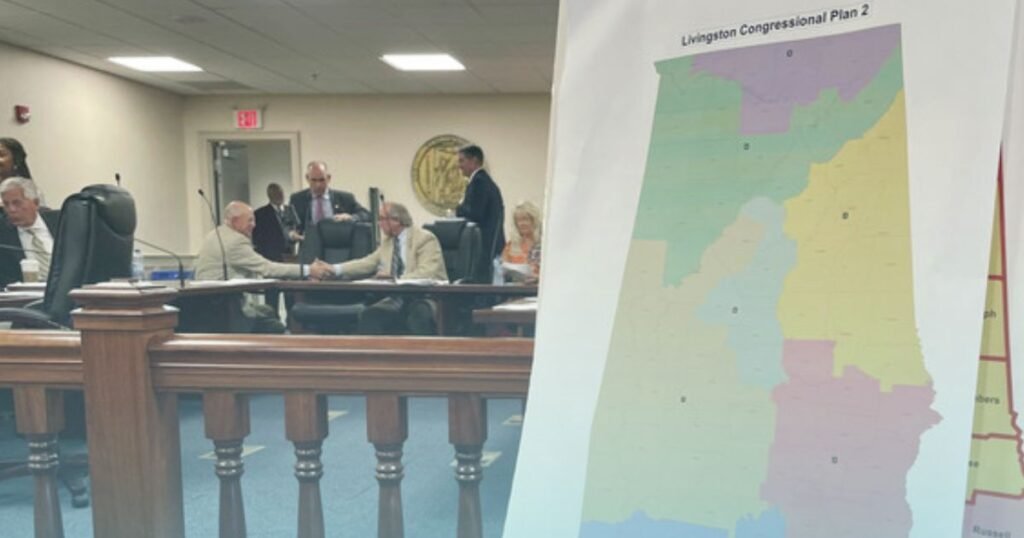The Supreme Court turned down Alabama’s emergency request on Tuesday, clearing the way for a new congressional design that would probably contain a second district with a majority of Black people to account for the state’s 27% Black population.
The one-line decision shows that the court’s opinions haven’t changed since June when a 5-4 majority on the Supreme Court upheld a lower court’s order that the state redesign its seven-seat congressional map to include a second district with a majority of Black people, or “something quite close to it.” Additionally, the new districts may aid Democrats’ efforts to seize back control of the House of Representatives.
Without any apparent disagreement, the justices denied the state’s request to keep Republican-drawn borders that had been invalidated by a lower court.
The high court declined to get involved, allowing the work of a special master appointed by the court to go on. He put out three ideas on Monday that would establish a second congressional district with a majority of Black voters or very nearly so.
In Allen v. Milligan, the Supreme Court upheld a lower court ruling that had been uncontroversial in light of long-standing case law interpreting the federal Voting Rights Act. The majority of the Court, which was selected by Republicans, has a long history of being extremely antagonistic to voting rights litigants in general and to the Voting Rights Act in particular.
The attorneys for Alabama handled this case as though they had the Supreme Court in their back pocket, with that history appearing to be front and center in their minds. When the Milligan issue first came before the justices, the state’s attorneys put up a number of interpretations of the Voting Rights Act that would have completely eliminated the law’s protections against racial gerrymandering.
The plaintiffs (who are being supported by the Legal Defense Fund) in the action stated that their fight to hold the Alabama lawmakers accountable had been a protracted and discouraging one, but that it was now bearing fruit. “
The outcome of the court case on redistricting, which includes the ruling reached on Tuesday, might determine who will have the majority in the House after the election next year. Wider redistricting initiatives may provide Democrats a minor advantage in their fight to regain the majority they lost in 2022, likewise, similar allegations in other GOP-controlled Southern states have increased the number of Black members in their conference.

Effects Of Alabama’s Involvement
Due to the involvement of Alabama, the case will have an impact on other states, especially those in the South, and it may benefit Democrats in the next elections. That’s because analogous legal disputes over maps in Louisiana, Texas, Florida, Georgia, and other places where the interaction of race, politics, and redistricting has been contentious for decades will be influenced by the Alabama case.
Drawing a second majority-black district in Alabama would probably show a second Democrat being elected. Currently, the state has only one Democrat — Representative Terri Sewell who comes from the only majority-Black district’s state.
Alabama will immediately feel the effects of the court’s ruling, and the elections in 2024 could potentially have an overall national influence. Currently, Alabama is represented in Congress by six Republicans and one Democrat; however, due to the shifting demographics of the districts, Alabama is expected to elect a new Democrat to the body.
In other states where redistricting disputes are also taking place, black voters tend to lean Democratic.
The proposed proposals given by Richard Allen, the attorney chosen by the judges, will be discussed at a hearing arranged by a three-judge panel the following week. By changing the borders of Congressional District 2 to include Black voters who make up between 48.5% and 50.1% of the voting-age population, Allen’s three ideas might give the Democratic Party control of the seat.
“The State and its voters should be allowed this Court’s review before voters are sorted into race-based districts flouting all conceivable districting principles in search of super-proportionality,” Alabama authorities argued in the appeal.
In order to have primary elections in early March 2024, a new congressional map must be in place by October, according to state officials.
But at the very least, Tuesday’s orders imply that the justices are aware of the fact that once the Court’s rulings have been made public, they cannot let a state publicly disobey them.
Also Read: How a Government Shutdown Might Potentially Affect You?


Leave a Reply